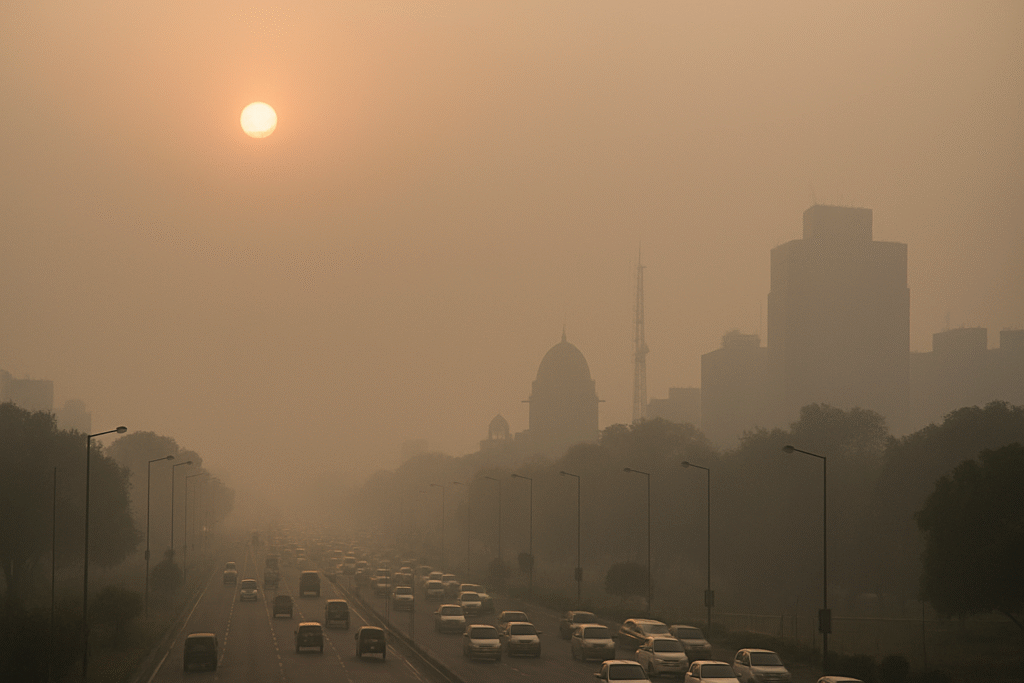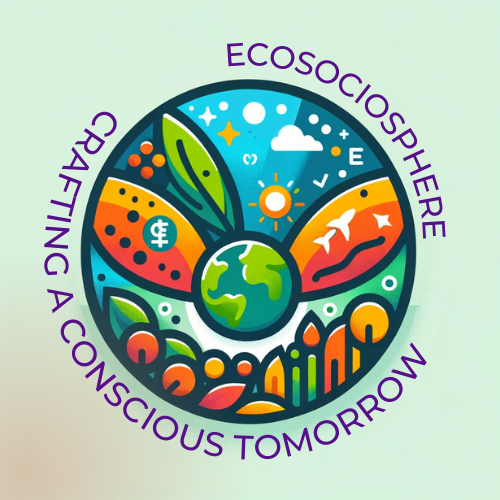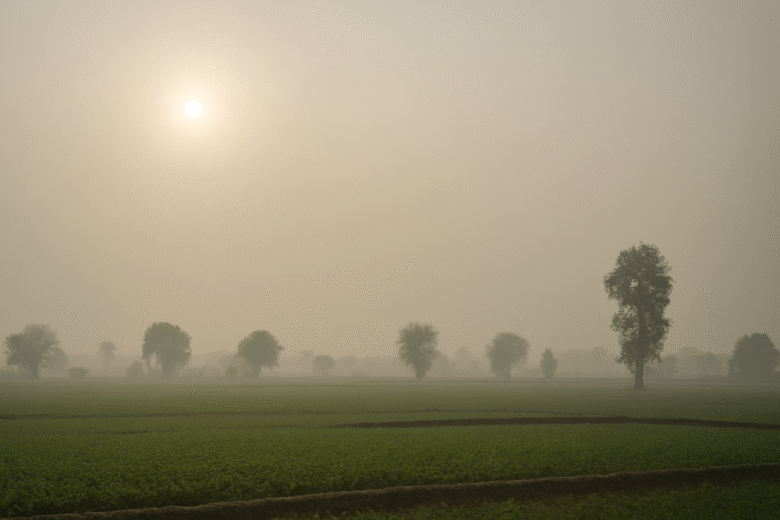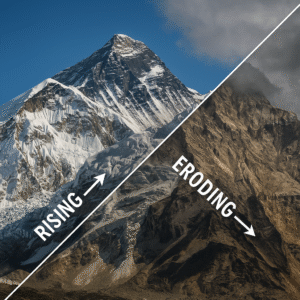Did you know that the amount of sunshine reaching the ground in India has been slipping by hours every year? That’s right — “Sunlight Fading in India: Pollution Is Stealing Our Days” isn’t a dramatic headline; it’s a scientific reality. As aerosols (tiny particles in the air), particulates, and thicker cloud cover work together, we’re all indirectly losing daylight — our cities look dimmer, our solar panels generate less, and our crops get less light. It’s time we noticed the missing light.
The Hidden Drop in Sunshine
You may have felt it: a hazy sky, a sluggish sun, fewer bright hours. Researchers from Banaras Hindu University (BHU), the Indian Institute of Tropical Meteorology (IITM Pune), and the India Meteorological Department (IMD) have found that every major region in India (except parts of the northeast) is losing annual sunshine hours.
For example, the northern plains have been losing about 13.1 hours of sunshine per year. The west coast about 8.6 hours, the central inland regions about 4.7 hours. That adds up: over a decade you could lose well over 100 hours of direct sunlight.
Why does this matter? Sunshine hours (SSH) aren’t just about brightness. They signal how much direct solar radiation hits the surface — the fuel for solar energy, for crop growth, even for our biological clocks.
What’s Behind the “Dimming”?
People often blame just the clouds or monsoon for dull days. But the science points to something more persistent: aerosols and particulates — from vehicles, factories, biomass burning, and dust — altering the atmosphere’s transparency. These particles scatter and absorb sunlight before it hits the surface.
Also, high aerosol counts lead to clouds with more and smaller droplets (the so-called Twomey effect). These clouds stay aloft longer, reflect sunlight instead of letting it through, and extend overcasts even when it’s not raining.
So the scenario: more pollutants + more condensation nuclei = dimmer skies. Add an active monsoon or overcast season, and the drop in sunlight becomes sharper. In the study, the months June to September showed sharper declines.

Why This Matters: Solar Energy and Agriculture Take the Hit
First: solar energy.
India is one of the fastest-growing solar markets. But if less sunlight is reaching the panels, that’s less electricity generated. Even a small drop in solar radiation can mean meaningful losses over large solar parks.
Second: agriculture.
Crops depend on sunlight for photosynthesis, growth cycles, and yield. When sunshine hours shrink, that’s a subtle but real stress. Imagine a wheat belt that expects a given sunlight regime and now gets less — slower growth, more moisture retention on leaves (which can foster disease), and possibly lower yields.
Third: everyday life.
Fewer bright hours can affect mood, our vitamin D exposure, the heating of urban spaces, and even how we design buildings or use daylight. It can make the already hazy sky feel even more oppressive.
Anecdote: A Farmer’s Lament
I visited a friend in a farming village a few months back. He looked up at a weak, diffuse sun and said: “We used to know when the sun would be strong; nowadays feels like half-light.” He wasn’t quoting data — he was quoting lived experience. When parts of the field stay under diffuse light and the sun is hidden by haze or thin clouds, the crop feels it too. That lived observation aligns with the data: light is leaking away.
Regional Variations and What They Tell Us
The drop isn’t uniform. Northern inland regions show the steepest declines (-13 hours per year). The central inland — which includes places like Nagpur — shows smaller but real declines (-4.7 hours per year) between 1988 and 2018. The northeast region seems more stable, possibly because of a different climate, fewer heavy pollutants, or different aerosol dynamics.
What this tells us: it’s not just weather or geography — human activity matters. Heavy industrial zones, dense traffic corridors, and regions with intense biomass burning or dust storms show greater dimming.
The Big Picture: Pollution, Energy, and Environment Connected
We often treat air pollution as a matter of health (respiratory diseases, heart conditions). It is — but it’s also an energy and climate issue. When pollution shrouds the sun, it reduces solar potential, changes micro-climates, and shifts agricultural rhythms. Dropping sunshine hours is a symptom of our worn-out atmosphere.
On the energy front, if solar parks expect certain sun-hours and get less, the business case changes. On agriculture, yields and cycles are subtly shifted. On urban life, people may increasingly live under haze, fewer clear-sun days, and a kind of “thick daylight” that feels dim.
We’re at a stage where sunlight — something we took for granted — is being quietly stolen. And that matters.
What Can Be Done?
Let’s not pretend this is all hopeless. Other countries have reversed similar trends. For example, Japan and China implemented strict emissions control and saw improvements in surface solar radiation. When you clean the air, the sun comes back.
In India, this calls for coordinated action:
- Stricter control of industrial emissions, vehicle exhaust, and dust.
- Alternatives to biomass burning and better in-field crop residue management.
- Urban planning that factors in daylight availability and dispersion.
- Solar project designs that use efficient panels and adaptive tracking systems.
- Public awareness: Yes, we talk about smog, but do we talk about missing sun?
If we treat air pollution only as a health hazard — and ignore its impact on sunlight, energy, and food — we miss the bigger picture.
Conclusion
“Sunlight Fading in India: Pollution Is Stealing Our Days” isn’t a metaphor — it’s a scientific and social alarm. The bright sunshine we once relied on is slipping away year by year. The culprits: aerosols, particulates, thicker clouds, and human activity that has dulled the sky. The consequences are serious — for our solar energy ambitions, our farms, and our daily lives.
But there’s hope. Clean air, stronger regulations, smarter energy, and agricultural systems can restore our sunny days. The sun doesn’t have to fade — but only if we act.
Next time you pull the curtains at dawn and the light feels weak, remember: that’s not just early morning — it’s a wake-up call.
Author’s Note
I grew up loving the long summer afternoons when the sun would linger. Watching it slip quietly behind haze and clouds over the years made me realize: when the sun fades, the whole day is subtly changed. This piece is my plea — don’t let the sun become a casualty of our hidden pollution.
G.C., Ecosociosphere contributor.
References and Further Reading
- Long-term trends in sunshine hours across India (1988-2018)
- India’s sunshine hours are shrinking every year: Scientists link alarming decline to pollution
- Declining sunshine hours across India threaten solar energy forecasts
- Decline in India’s Sunshine Hours Due to Rising Aerosol Pollution
- India losing its sunshine to cloud cover, bad air: Study
- Asian brown cloud




